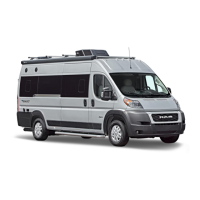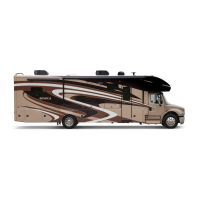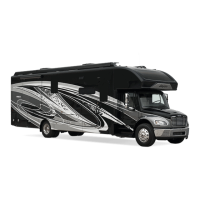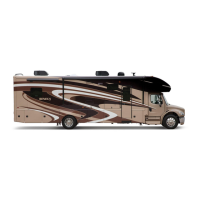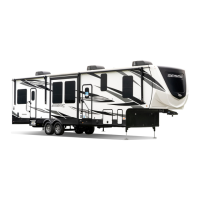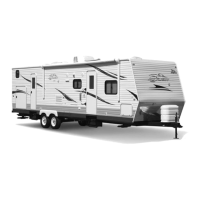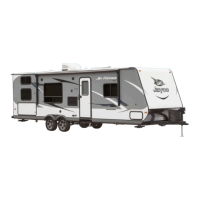38
Changing A Tire
If you experience a at tire on your motorhome while driving, gradually decrease your
vehicle speed (if possible), and move the motorhome to a safe place on the side of the road.
Contact your road service provider (if applicable) or a qualied service facility for assis-
tance. .
Make sure the road service technician reads and is familiar with the Chassis Guide informa-
tion regarding changing the tires. Make sure the wheel lug nuts have been tightened to the
proper torque as outlined in your Chassis Guide.
The motorhome is very heavy. Raising the motorhome to replace the
tire should only be done with extreme caution by a qualied technician.
The vehicle could slip, causing personal injury or death.
When replacing a tire, make sure to replace it with a tire of the same size
and specications (refer to your Chassis Guide for assistance).
Cold tire ination pressure is dened as a tire that has not been
used for three or more hours, or has been driven less than one mile. Tire
ination pressure of a hot tire may show an increase of as much as 6 psi
over a cold tire.
It is recommended that the tire pressure be checked at the beginning of
each trip to obtain the maximum life of the tire. Follow the instructions
listed on the Federal Certication label, to determine the correct tire pres-
sure. Under-ination may cause tire failures and swaying resulting in loss
of control, injury, death or property damage.
Towable recreation vehicles are equipped with special trailer (ST) tires
that have a maximum speed rating of 65 MPH (104 km/h).
Exceeding the tire speed rating may result
in tire failure, which could lead to an accident causing serious injury or
death.
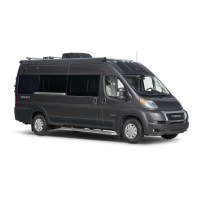
